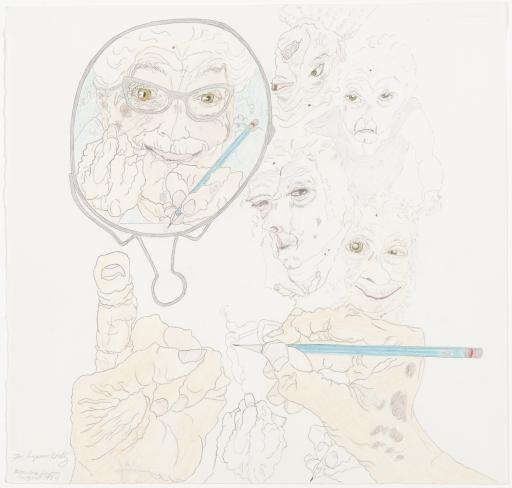untitled, Elizabeth Layton
Artwork Overview
Elizabeth Layton, artist
1909–1993
untitled,
August 1984
Where object was made: United States
Material/technique: colored pencil; pencil
Dimensions:
Sheet/Paper Dimensions (Height x Width): 30.2 x 31.6 cm
Sheet/Paper Dimensions (Height x Width): 11 7/8 x 12 7/16 in
Mat Dimensions (Height x Width): 16 x 20 in
Sheet/Paper Dimensions (Height x Width): 30.2 x 31.6 cm
Sheet/Paper Dimensions (Height x Width): 11 7/8 x 12 7/16 in
Mat Dimensions (Height x Width): 16 x 20 in
Credit line: Gift of Lynn Bretz and Janet Hamburg
Accession number: 2011.0475
Not on display
If you wish to reproduce this image, please submit an image request



